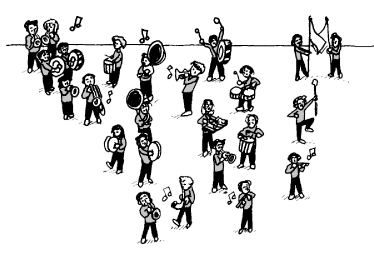Yellow
Green
Blue
Red
Magenta
Remove
- Is 5 a factor of 38? Why or why not?
- Is 38 a multiple of 5? Why or why not?
- Is 5 a factor of 35? Why or why not?
- Is 35 a multiple of 5? Why or why not?
- Is 8 a factor of 32? Why or why not?
- Is 8 a factor of 36? Why or why not?
- Which number is a multiple of 8: 32 or 36? Explain your answer.
- The band leader at Coleman School wants to arrange the 48 members of the marching band into rows with an equal number of students in each row.
- Can he arrange them into 6 rows? Is 6 a factor of 48?
- Can he arrange them into 7 rows? Is 7 a factor of 48?
- Can he arrange them into 8 rows? Is 8 a factor of 48?
- 48 is a multiple of which of these numbers: 6 7 8
- Find the factors of:
- 12
- 16
- 25

Use the How Many Rectangles with 24 Tiles? page in your Student Activity Book to find all of the factors of 24. Then find more factors with the How Many Rectangles with Tiles? page.
Prime Numbers
A prime number is any number greater than one that has only two factors—itself and one. Thirteen is a prime number because its only factors are 13 and 1. Fourteen is not a prime number because it has four factors: 1, 2, 7, and 14.
- How many rectangles are possible with 13 tiles?
- How many rectangles are possible with 14 tiles?
- Which numbers between 1 and 25 have only 2 factors? These are prime numbers.
- Which of the following are prime numbers? Explain.
- 35
- 27
- 41
Use the Factors and Multiples on the Number Line page in your Student Activity Book to find multiples.











